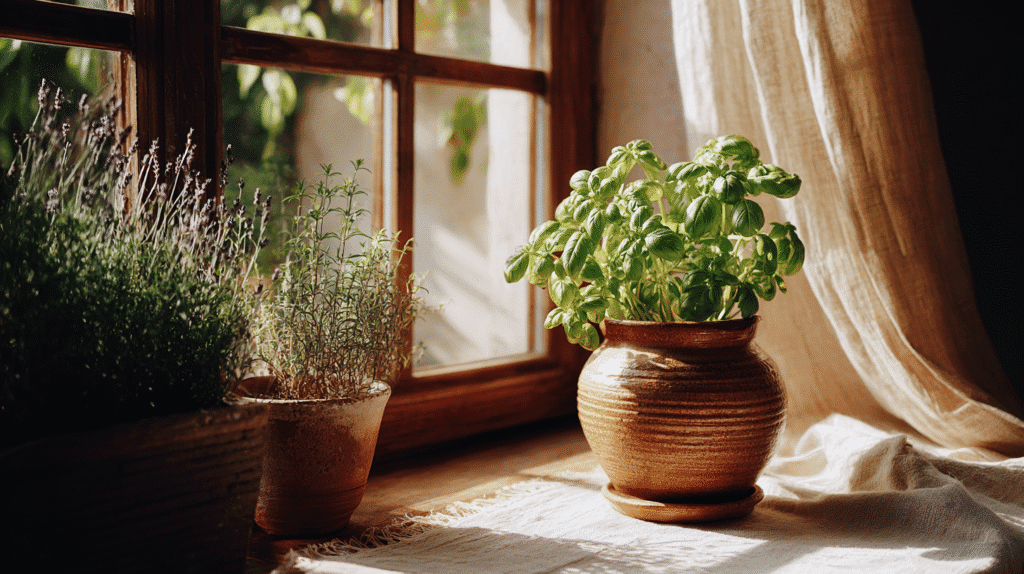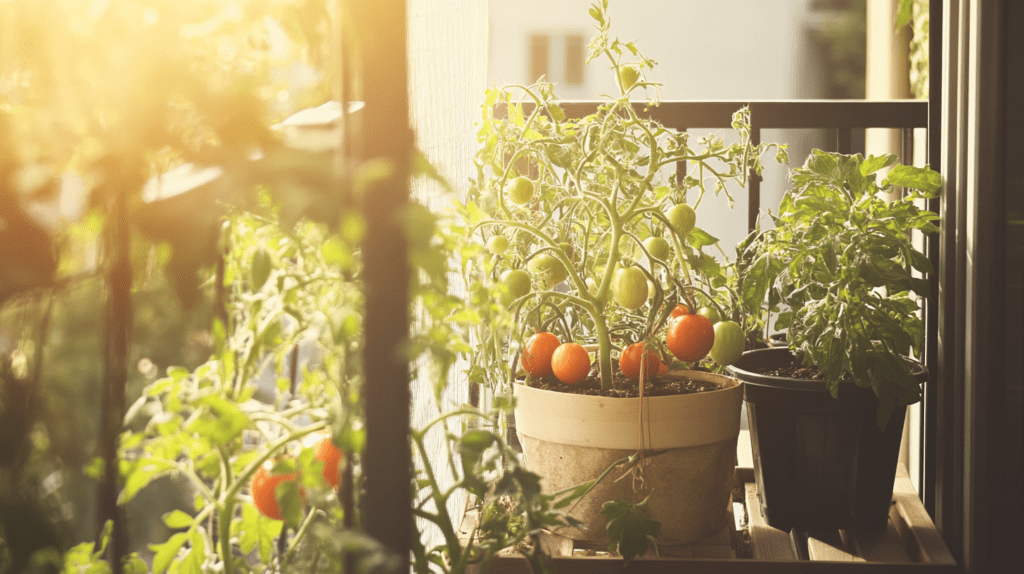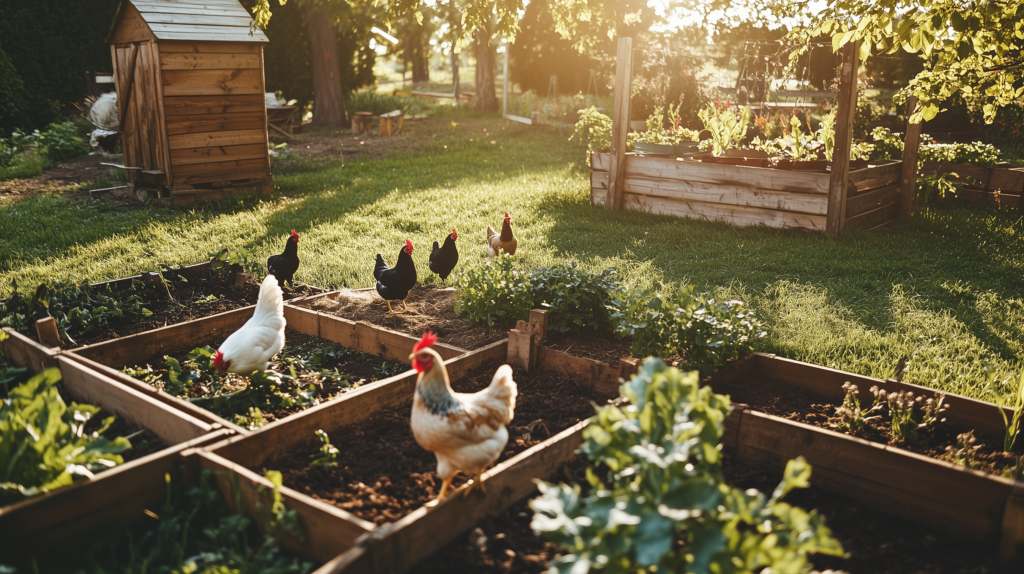This post may contain affiliate links, including those from Amazon Associates. If you make a purchase through these links, I may earn a commission at no additional cost to you. Learn more about our affiliate policy.
Some mornings I wake to the sound of buses exhaling at the corner and the sunlight warming my little kitchen garden.
My basil leaves curl toward the window, a small reminder that sovereignty doesn’t require acres of land.
City life often feels like dependence, on supermarkets, on endless packaging, on systems that can feel fragile when we look closely. But I’ve learned that sovereignty grows in the smallest of habits.
Self-sufficiency in a city doesn’t come from grand gestures. It comes from simple swaps—tiny steps that slowly stitch resilience back into everyday life. These twelve changes are practical and gentle, yet together they create a home that feels more rooted and more your own.
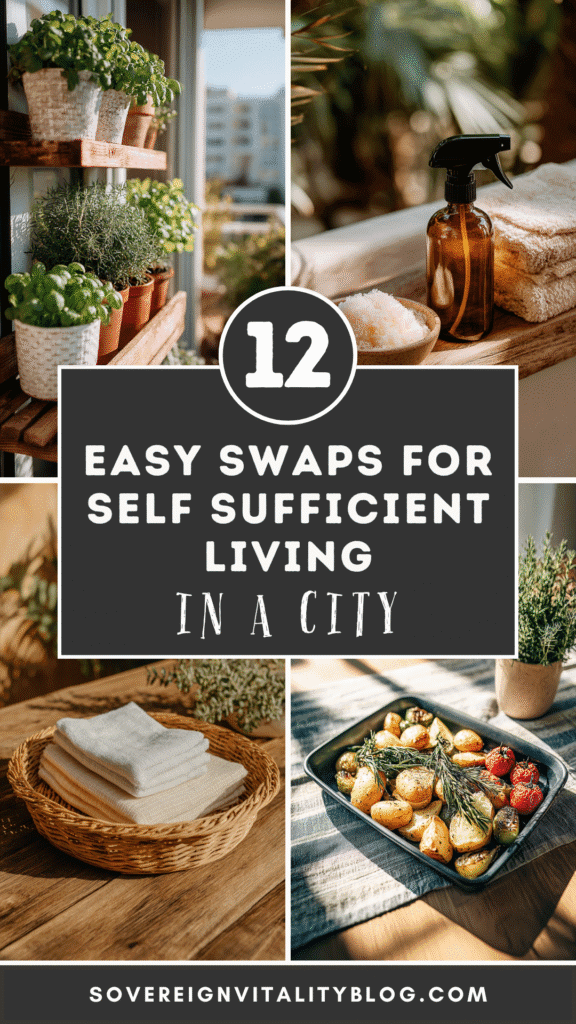
1. Grow herbs and microgreens instead of buying packaged bundles
Fresh herbs are one of the simplest ways to taste self-reliance.
A sunny windowsill or balcony rail is enough for basil, parsley, or mint. Microgreens like pea shoots, radish greens and sunflower sprouts are even quicker, ready to harvest in just a week. In winter, they bring brightness to heavier meals.
If you want to get creative, try turning a blank wall into a living pantry. These indoor herb garden wall ideas are inspiring examples of how vertical space can transform into a green corner of sovereignty.
2. Swap plastic wrap for beeswax wraps and silicone lids
For years I kept reaching for plastic wrap out of habit, until one day I realized I didn’t need it.
Beeswax wraps mold around bowls and half-cut fruit.
Silicone lids stretch over glass containers. Glass jars fill in the gaps.
The kitchen feels calmer now, and I’m no longer throwing away sheets of plastic after a single use. The wraps also bring a touch of beauty to the fridge with their patterned cloths instead of disposable waste.
3. Compost scraps instead of throwing them away
My first attempt at composting was clumsy. I overwatered the worm bin and worried I’d ruined it.
But within weeks the process found its rhythm. Even in apartments, composting is possible through bokashi buckets, worm bins tucked under the sink, or countertop composters that fit neatly on a shelf.
If your city offers green waste pickup, a small lidded pail makes collection effortless.
The shift from “waste” to “future soil” is one of the most empowering swaps you can make. Scraps become nourishment, and your trash shrinks in half.
4. Make natural cleaners instead of buying multiple bottles
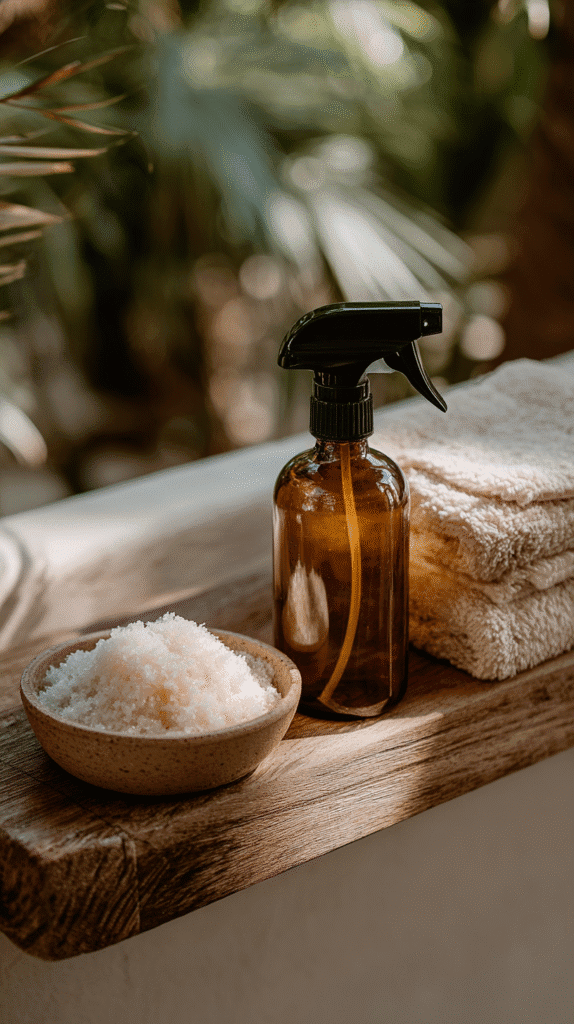
At one point, my cupboard overflowed with bottles, one for glass, one for counters, one for bathrooms.
Now I keep a spray bottle of diluted vinegar for mirrors and windows, another of castile soap for surfaces, and baking soda for stubborn spots. A few drops of essential oils make the house smell fresh without synthetic fragrance.
If you’d like to simplify your home the same way, I’ve shared my favorite DIY natural cleaner recipes. These blends take only minutes and replace half a cabinet’s worth of products.
5. Choose cloth over paper
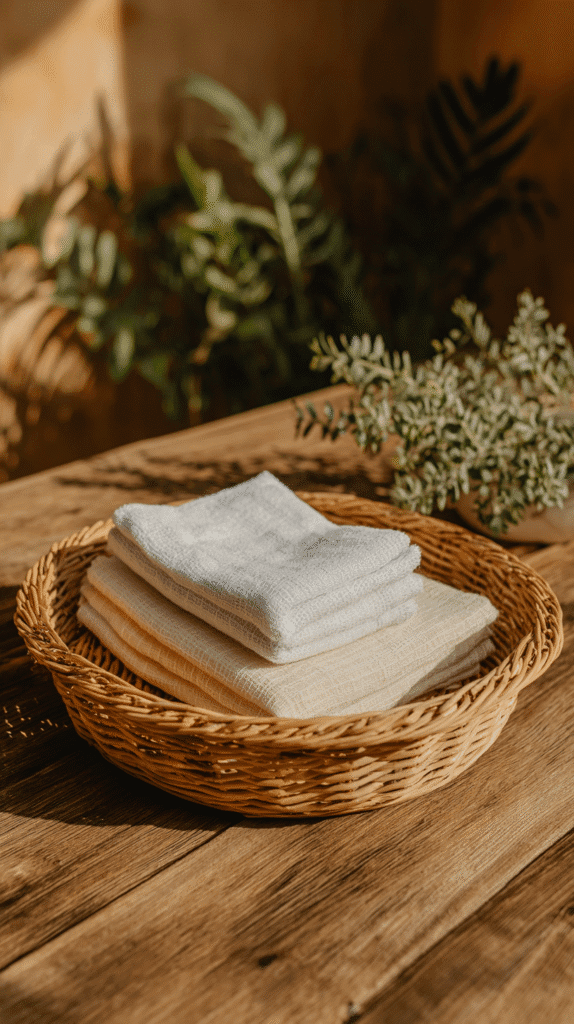
Switching to cloth was easier than I expected. Cotton napkins turn dinners into a small ritual.
Old t-shirts cut into squares handle spills better than paper towels ever did. I keep a basket by the washer and toss them in with towels each week. It’s a quiet rhythm that saves money and keeps disposable waste out of the bin.
There’s something deeply grounding about knowing I can clean my home without relying on paper products that constantly need replacing.
6. Brew coffee and tea the low-waste way
I once used single-use pods because they felt convenient, but they created mountains of waste.
A French press, pour-over cone, or reusable tea strainer changed everything. The flavors are richer, and the waste is nearly zero.
Used coffee grounds feed my plants, and loose-leaf teas feel like small ceremonies. These swaps remind me that convenience often hides costs, and that slower methods often bring more joy.
7. Cook once, enjoy twice
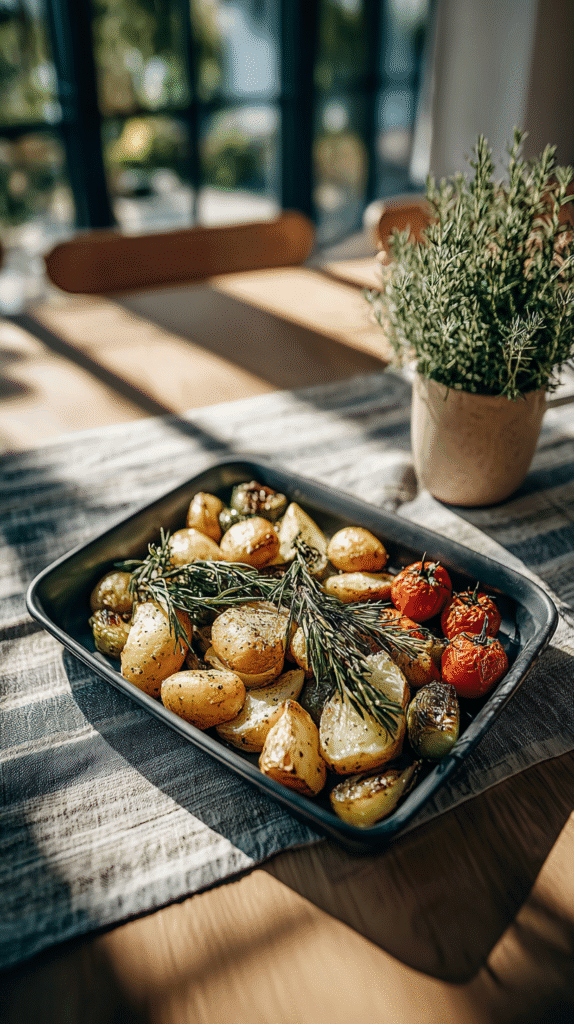
I used to dread weeknight cooking after long days. Batch cooking changed that. Now I roast trays of vegetables, simmer beans, or prepare broth on Sunday afternoons.
Through the week, I build meals in minutes from those foundations. It’s a practice that saves time, lowers takeout cravings, and makes self-sufficiency feel possible even in the busiest seasons. I always set aside a portion for the freezer, and future me always feels grateful.
Get more tips about clean eating meal plans for beginners here.
8. Buy staples in bulk where you can
Urban kitchens rarely offer endless storage, but even one or two bulk staples make a difference.
I keep oats, rice, and beans in large jars. Buying once a month reduces packaging and ensures I’m never caught without a simple base for meals.
If storage is tight, splitting a bulk order with a neighbor or friend is a smart workaround. Bulk shopping reminds me that self-sufficiency doesn’t always mean doing everything alone, it can also be about community.
9. Adjust lighting and temperature with intention
Swapping bulbs for LEDs was an easy start, but I also began noticing how my habits shaped energy use. In winter, I close curtains before sunset to trap warmth. In summer, I open windows early and close them before the heat rises.
These micro-adjustments reduce dependence on constant climate control. They also align me more closely with the rhythms of the seasons, a form of self-sufficiency that requires no purchase at all.
10. Build a small repair kit instead of replacing
The first time I fixed a loose cabinet hinge, I felt an unexpected rush of pride.
A screwdriver, pliers, some nails, and a few sewing basics now live in a small tool roll in my closet.
Learning to patch clothing or tighten bolts means fewer trips to stores and fewer items thrown away.
Self-sufficiency is not about perfection at first, it’s about trying, fumbling, and learning to trust your hands again.
11. Grow food vertically instead of expanding outward
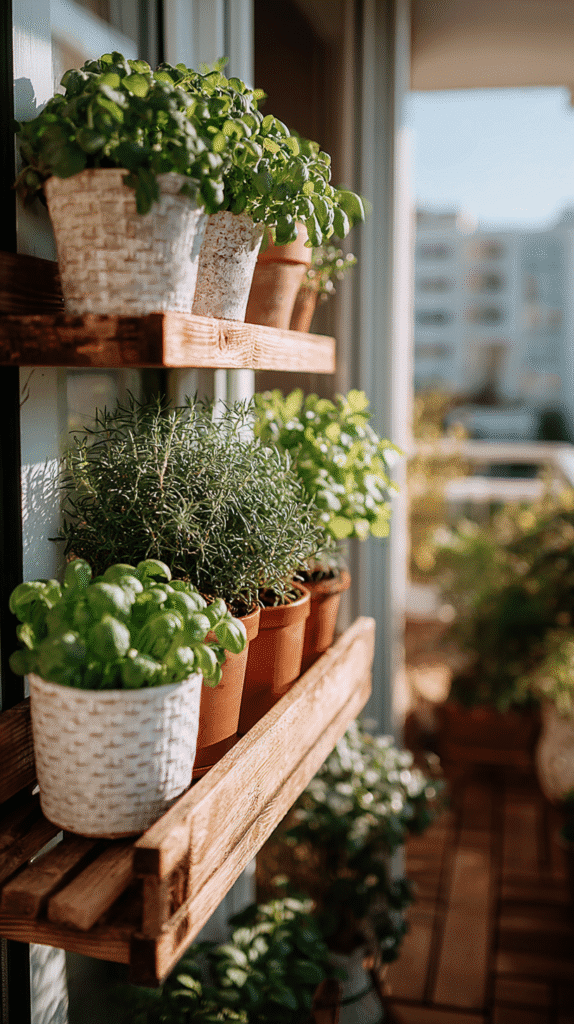
I don’t have a backyard, but I’ve learned that shelves, balcony boxes, and wall planters turn sunlight into salad.
Lettuces, radishes, and peas all thrive in containers with steady watering. Vertical growing makes abundance possible in the smallest spaces. For more inspiration, take a look at how others are homesteading in an apartment without a backyard.
It’s proof that sovereignty is possible, even without soil beneath your feet.
12. Keep a small emergency pantry
I used to ignore preparedness, until one winter storm left the shelves bare.
Now I think in categories: water, proteins, grains, fats, and a few comfort items. I rotate weekly so nothing expires. A small first-aid kit, candles, and matches add another layer of steadiness.
This isn’t about extreme prepping, it’s about readiness in case of any urban situation that causes you to not be able to leave your home for a few days. A simple pantry ensures that when disruptions come, home still feels calm and nourished.
Closing reflections
What I love about these swaps is how much they change the feel of daily life. It isn’t just about saving money or reducing waste. It’s about feeling rooted in your own rhythms rather than dependent on outside systems.
It’s about replacing the hum of “what if” with the quiet confidence of “I can.”
Start with just one. Grow herbs in a jar, stir up a simple cleaner, fold a cloth napkin at dinner. These small changes hold more power than we realize.
They carry us toward sovereignty, not through leaps but through gentle steps. Over time, the city feels less like a place that pulls you outward and more like a sanctuary that steadies you inward.

